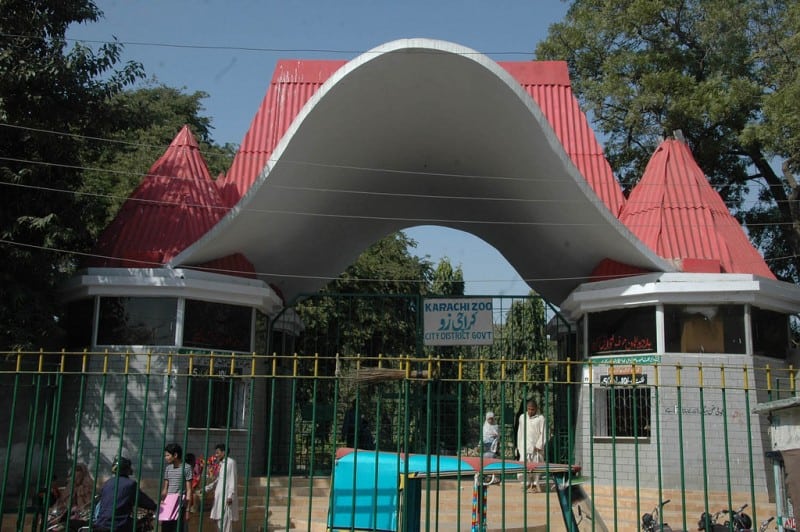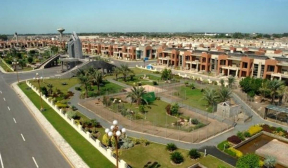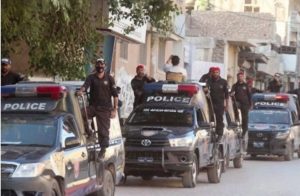By Muzhira Amin, Asma Farooq, Sara Noor, Zaymal Khan, and Farah Naz
KARACHI — As a child, one can vividly remember the times their dad would drive them to the zoo. The excitement during the journey and the fascination upon reaching there are feelings one can never forget. It used to be an amazing experience getting to see the animals one would see on television screens, upfront. Though growing up often kills the excitement, it does replace the feeling with empathy.
The Karachi Zoo, previously known as the Mahatma Gandhi Garden, is the second oldest zoo in Pakistan. Dating back to 1878, the garden was later transferred by the government to the municipality government in 1861. After independence in 1947, the name of the garden was changed to Karachi Zoo. The place is well-known among children as well as adults. However, for the animals who live there, ‘it’s complicated’.
According to the zoo’s deputy director, Abida Raees, “There are three places in Karachi that come under our surveillance and control; the Karachi zoo, Safari Park and Landhi Korangi zoo. There are 850 animals in the Karachi zoo at present including carnivores and other mammals, birds and reptiles. Apart from animals, the zoo also is home to plants and trees that date back to 200 years.”

Entertainment is the least important of objectives of the zoo; conservation is. – Director Karachi zoo, Mansoor Qazi
For most of the citizens, the zoo is a source of entertainment. By paying a minimal entry charge of Rs.30, they are able to enjoy a few hours away from their busy lives. However, that is not the purpose of a zoo.
“Zoos are protected areas in a city. And the aim of these protected areas is conservation. What is conservation? It’s protecting our local endangered species. The main objective of a zoo is captive breeding of all the endangered local species,” Director Karachi zoo, Mr. Mansoor Qazi said.
“All the zoos have a pivotal objective locally and globally; protection of the highly threatened species. And by that, I mean those species that are near to extinction. Not only local, but the preservation of regional and global species also is a responsibility,” he added.
Captive breeding itself is a very controversial term, not only in Pakistan but throughout the world. Various wildlife experts reject it, calling it ‘expensive and useless’ because many animals like panda and bears rarely breed in captivity.
On the other hand, there have been some highly successful cases of the phenomenon. Abida Raees, talking about the technicalities of captive breeding said, “We told you the responsibility of a zoo, but everything in the universe is made for a greater purpose. That purpose for the zoo is to enrich these animals so that they grow into healthy individuals.
Now, how does captive breeding happen? If I have a particular specie in my zoo and some other zoo in the country has a similar specie, we breed them, with the aim to reintroduce their stocks into the wild. However, it can’t take place just like that, there are certain guidelines by the International Union for Conservation of Nature (IUCN) that we have to follow. Entertainment is the least important of the objectives of the zoo, conservation is.”

According to IUCN, Pakistan has 45 of the internationally endangered species. Of these 45 species, four are critically endangered, 12 are endangered and 29 are vulnerable. These species include the Asian black bear, also kept in Karachi zoo currently with another female Syrian brown bear. “Asian white-backed vulture, Baluchistan black bear, cheetah, golden Mahaseer, Markhor, snow leopard, green sea turtles, long-billed vultures, Indian vulture, mountain weasel, and Marco polo sheet are also at the brink of extinction in Pakistan”, said Zarish George, a Zoology Professor at Aga Khan College.

“Talking about conservation, I would like to share something with you,” Mansoor Qazi said with a sarcastic smile on his face. “Every year a survey by the Sindh Zoological Survey Department takes place which makes a list of all the endangered species in Sindh, also called as the ‘Red List’. Whether a specie is extinct, threatened or vulnerable – the status is mentioned in the report. The report is then sent to us. Unfortunately, under the 18th Amendment that was passed in 2015, Sindh Zoological Survey Department was dissolved temporarily. From then onwards, we haven’t received any survey yet. Few years back, we heard that the institution was given under KPT. However, no signs of the survey departments or the surveys have been seen ever since.”
‘THE DEBATE’
In many instances when talking about zoos, the argument arises that zoo animals should be sent out into the wild, instead of being behind bars in the centre of a city. Various animal rights activists have been speaking against zoos and demanding their closure. “Most zoo visitors look at caged animals like wallpaper and spend only a few seconds in front of each animal. The only thing they learn from this experience is that it’s okay to cage wild animals,” Mahera Omer, Co-founder and Director of Pakistan Animal Welfare Society (PAWS) said.
On the flip side, the zoo director defended the zoo saying, “Recently we have bred and conserved 20 local, regional and global species and inducted them to the Karachi Safari park. Right now we only have local and regional species in the zoo, but we can’t call them healthy stocks, instead, they are all inbred stocks. Although these animals are physically healthy, genetically they are not sound. Thus, they are not prepared to go into the wild. Instead, we would breed these animals with the same species in some other location.
The animals would be provided with soft spans – zero human interference areas. The product of this captive breeding would then be released in the wild. If I release these animals I have right now in jungles, they would die of hunger, they wouldn’t be able to hunt because they do not have it in their genes.”

The aforementioned biological reasoning given by the zoo director doesn’t suffice to the condition of the zoo since the past 10 years. Even if these animals are destined to live in cages, getting a clean enclosure and timely water and food is their foremost right. A part of this is also the fault of the citizens who go to the zoo because they play an integral part in littering the cages.
“The way zoo cages are designed at Karachi zoo visitors are able to verbally assault, spit at, throw food, trash, and use sticks and stones at helpless animals. Perhaps it’s time we looked at saving habitats and letting our precious wild animals remain in the wild where they belong,” Mahera Omer further said.
While some take extreme sides, others believe that the debate is never-ending, thus a middle way should be taken. Dr. Shahid Amjad, Head of Environmental studies department at IoBM and a Ph.D. from School of Ocean Sciences, UK, said, “There are pros and cons to that argument. Cons are evident from the fact that animals in zoos are devoid of their natural habitat, they are deprived of their natural instinct of hunting and preying on other animals and therefore, they lose that instinct.”

On the contrary, Dr. Shahid Amjad, further adds, “Seeing an animal in person, has more of an impact on children rather than seeing them in documentaries or pictures. As zoos are typically located in cities, like Karachi zoo itself, makes it accessible to the city’s wide urban population with thousands of visitors every day. In this modern digital age, children are distracted by technologies and have all experiences through smartphones. But zoos still continue to attract them.”
THE CAPTIVES
A cursory look at the recent news would completely justify the statement. In the past 10 years, Karachi zoo has lost immensely from lions to jackals and bears. Earlier this, year a 13-year-old lion named Simba came to zoo and died just three months later. When questioned about the zoo negligence, Karachi Zoo Director, Mansoor Qazi, said, “Despite of some discomfort in the zoo because of the development work, animals are being properly looked after.”
According to a report by Tribune, in 2013 alone, over 23 deer at the Karachi zoo died after getting infected with a virus because of the contaminated water. In April 2016, a male Bengal tiger died due to kidney failure, while three newborn pumas recently passed away.

If you have recently visited the zoo, you would see a weak pair of lion and lioness facing the other side of the cage or lying on the ground lifeless. Or the mice that are usually seen licking the leftover bones in the Canadian puma’s cage.
Not to forget the overcoming wave of stench that hits you when you pass by the enclosure of the ducks. The pond that the ducks were drinking from and swimming in clearly looked contaminated and even smelled so.
Moving towards the enclosure of chimpanzees and monkeys would further make you gulp down your tears. The hollow eyes of the mammals staring at you from behind the bars makes one feel if we really are human or just monsters inflicting harm to the natural environment and beings. What’s worse is that there are only two vets in the zoo.
“The major things that need to be improved in Karachi zoo are good food on time, hygiene, vaccinations and proper treatments for illnesses”, says Zarish George.

Safwan Ahmed from Pakistan Wildlife Foundation told us, “I have been observing the zoo for the past 30 years and I think the major problem is that the zoo management does not have a proper diet plan for the animals. They don’t have an ethologist; animal behavior experts who keep a check on the diet of animals respective of the changes of behavior especially mega mammal like elephant, giraffe, rhino, tiger and bears. They have never considered a specialist when it comes to these mammals. They have an old planning system of about thousands of years old, given to them by the British and they tend to follow it blindly rather than upgrading it.”
On the contrary, zoo management had something completely different to tell us. Muhammad Ismail, Director of Aquariums at the Karachi zoo said, “The diet for all the animals have a process, instead of just being given like that. When an animal first comes in the zoo, a specific diet plan is devised for it according to its health necessities. Appropriate timings are decided so as to when to feed the animal. Some animals like snakes are fed twice a week, whereas carnivores and big cats are fed twice or thrice in a day.”
Yusuf, the elephant caretaker at the zoo told us, “These elephants are fed thrice a day. And each time they are fed different things.”
Apart from the diet, another factor that is brought up over and over again is the training of the staff at the zoo. Many animal rights organizations talk about the lack of trained staff in the zoo. Not only them, but the zoo management itself find this as a never-ending problem for them.
“We don’t have training centers specifically for zoos in our city. Neither are there any People for the Ethical Treatment of Animal (PETA) courses offered in colleges or universities. Mostly these people learn from working in the cages only. The job is usually hereditary, passed down from father to son. However, in some cases we hire specialist trainers who work with the staff for a short span of time One the staff is trained, we hire them on contract basis”, Muhammad Ismail said.
While visiting the zoo, we came across an example of the aforementioned procedure. The keeper for elephants, Yusuf has been working in the zoo since the past 33 years. “When I was in class seventh, I would bunk my school and come to the zoo everyday, staying by the enclosures all day and closely observing the keepers.
One of the zoo officials noticed my frequent visits and inquired the reason behind them. I told him that I loved animals and wanted to work with them. He told me to come back after completing my matriculation and he would give me a job. Four years later, I was working in the zoo for these animals. In the last 33 years I have taken care of lions, peacocks, deer, reptiles and now I’m with these elephants.”

Similar was the story of Ashok, the caretaker of the reptile house who had been working in the zoo since the past 14 years. He told us that his relationship with the snakes had flourished so well that they could both easily understand each other. “I was trained here in the zoo only.”

Apart from training arranged by the zoo management, World Wide Fund for Nature (WWF) to trains the workers in the zoo. “WWF provides services and educational facilities like training the zoo workers and launching awareness campaigns. We have often educated the zoo staff about care and well-being of animals”, says Hamera Aisha, Director WWF.
THE COST OF CAPTIVITY
The Karachi zoo has been under the limelight for being notorious when it comes to funds. There have been allegations and accusations on it for corruption wherever money is brought up. However, all these were just indictments, never proven though. What most people, specially the general public, don’t know is the basics, simply like how is the zoo funded.
Karachi zoo comes under the Karachi Metropolitan Corporation (KMC), which is a body that comes under the local government. Thus, all the budget allocated to the zoo is through KMC. Mr. Jabbar Bhatti, Senior Director Accounts at KMC told us, “There are various things that come under KMC, including roads, the infrastructure of the city etc. Thus, these things are our utmost priority. The funds for the zoo are relatively less. Whatever they do use are the revenues the zoo itself generates. They have a special account where the funds and the revenues are transferred.”
While on the other hand, Muhammad Ismail said quite the contrary. “The zoo is not only equipped with animals but also has staff and management. Now the salaries of these workers come from KMC directly, because technically we all working in the zoo are governments officials.”
There is a separate budget for the feed of animals, there are daily diets and monthly diets. In any type of organization contingencies, maintenance, development, capital development – the budget has these bifurcations, including the salaries as well as other expenditures regarding the animals. As far as food is concerned, ads are published in newspapers inviting food suppliers. A bid is taken place in the KMC office and whoever wins signs a contract for a year with the zoo. ”
“The revenue that we earn from the zoo annually, five to seven crores is directly deposited into the KMC account. Most people often compare Karachi zoo with Lahore zoo. However, both have a huge difference. Lahore zoo is an autonomous body which means that whatever they earn, they can directly use it. On the other hand, we have to submit plea applications to KMC for even the smallest amount of money we need. The application itself goes through various phases like approvals, meeting and even delays before we finally get the money”, the Director for aquariums, Karachi zoo said.
On top of that, the zoo director told us that for daily expenditures, an imprest account has been granted to them where their monthly allowance is Rs. 10,000 – 15,000, which is highly insufficient for their daily expenditures. Along with this information, he also said, “Only the dead knows the condition of the grave. Similarly, the scenario visible from afar is different than what we go through every day.”
However, to counter these difficulties, the zoo often gets various donations. The Karachi zoo has a policy that it does not accept funds in form of cash. Whoever wants to donate could do it in the form of feed for the animals or training of zookeepers etc.
According to a report published on the KMC website, the annual revenues coming from the zoo for the year 2016-2017 estimated to be Rs55.029 million and the estimated revenues for the year 2017-2018 were Rs66.22 million. On the other hand, the budget allotted to Karachi zoo for the year 2016-17 was Rs.148.010 million and it is expected to go up by 35.13% during the next year.

THE ZOO REVIVAL PROJECT; “BEGGARS CAN’T BE CHOOSERS”
In these dark times, a beacon of light for the zoo is the Zoo Revival Project, inaugurated by Chief Minister, Murad Ali Shah and Mayor, Waseem Akhter, last year. The CM visited Karachi zoo last year in February, where he was moved at the condition of the animals. After which he met with a team of wildlife experts and architects to kick start the project after it got shelved for several years. The inspiration for this project was taken from the Singapore zoo.
The design director of the project and founder of Society of Protection of Animal Rights (SPAR), Zain Mustafa gave a detailed insight into the development and problems that need to be addressed. He told Murad that the animals should be given something more than cages.
Astute enclosures were the requirement for them which would provide the animals an environment where it could not just live, but also enrich. In his press conference with the media, the CM said, “The enclosures must be climate/season responsive, flexible for animals to interact and manipulate their spaces.” Moreover, funds of Rs.3o million have been allotted for the project by the Sindh Government.

However, Zain Mustafa ensured the CM that the design of the new structures is a result of research conducted by reviewing 10 international zoos. He further assured that the enclosures would have portable animal furniture, climbing structures and perching surfaces for an animal-friendly environment.
Zain Mustafa further told us, “The zoos that were studied as a part of the research were Berlin, Singapore, Hamburg, San Diego, Delhi, London, New York, and Brussels. What the team wanted to understand was how it can give the animals the best quality of life with intellectual stimulation, relief from boredom and a life enrichment program.”
The zoo director also told us that the enclosures would have an exhibition cubicle, a retiring cubicle, and a treatment cubicle. Alongside cameras are to be installed in all the enclosures for constant surveillance of the animals, day and night. Apart from that, they are also planning on making the enclosures such that the animals are protected from the abuse they suffer at the hands of civilians visiting the zoo.

Nevertheless, as mentioned above, a book cannot be judged by its cover. The zoo director told us in a recent meeting that things weren’t going as planned prior. “Zain and Rija were very good kids. They were in the project for good, they are talented and their love for animals added the cherry to the cake. However, recently a few weeks back both have stepped back from their positions in the project. And they have been replaced by interior designers, who are assigned to redesign a zoo.”
Few minutes before he said this, he was shouting at one of his workers. He was angry at the project team. They had recently sent some of their design for a check, however, without waiting for a response had started working on it. “It’s really simple you see, if you tell me to drive a plane, I wouldn’t be able to do so. Even if I tried, I would probably crash the plane, sabotaging the lives of all the passengers. Similarly, if two interior designers are given the steering wheel of a zoo with more than 800 animals, you know you are in for a disaster.”
The team is currently working without any wildlife or technical experts because of which the zoo management and the project team constantly get into debates and arguments. Abida Raees told us, “We are trying our best to facilitate them with the technical knowledge we have. We continuously send them our observations regarding the plan and the designs. However, it’s not considered to be a facility for the designers, rather they consider as a hurdle in their way. But if those observations are not followed, the revival project would serve to be useful, and the funds wasted.”
“An enclosure has various considerations, that we have communicated to them rendering it necessary for animals. However, they give us the references of foreign zoos from the internet. What they don’t understand is that conceiving these things from a picture, text or video and then executing it are two different things.
Otherwise, everyone around the world would have made a zoo alike the one in Singapore. For the success of the project, a person with technical skills is very important,” Head vet of Karachi zoo enlightened us with the technical aspects.
Concluding the discussion on the topic, zoo director, Mansoor Qazi told us that the management can never speak up or argue more, otherwise, the funding that they are getting now they would lose that too. “Beggars can’t be choosers,” he said.
THE BIG QUESTION

Despite all the hullabaloo happening in various news channels and reports every now and then, Karachi zoo remains to be one of the highly visited places by the masses. Animals are dying every day and new ones are brought in.
When the topic of a solution is brought up, some anti-zoo candidates like Mahera Omer openly condemn the concept of zoos. She says, “The big ethical question is not why the zoo is mismanaged or lacks funds or bigger cages of animals. The big question is “why cage animals at all?”. There’s no such thing as good zoos.”
On the other hand, the Sindh Wildlife Department blames KMC and the local government for the mismanagement. Abid Ali, Personal Assistant at the Sindh Wildlife Institute says, “The zoo could do much better if it comes under our department like it’s in all the other provinces.”
Only a few wonders that even if the zoo is getting revamped, can we trust the government to do it the right way?














